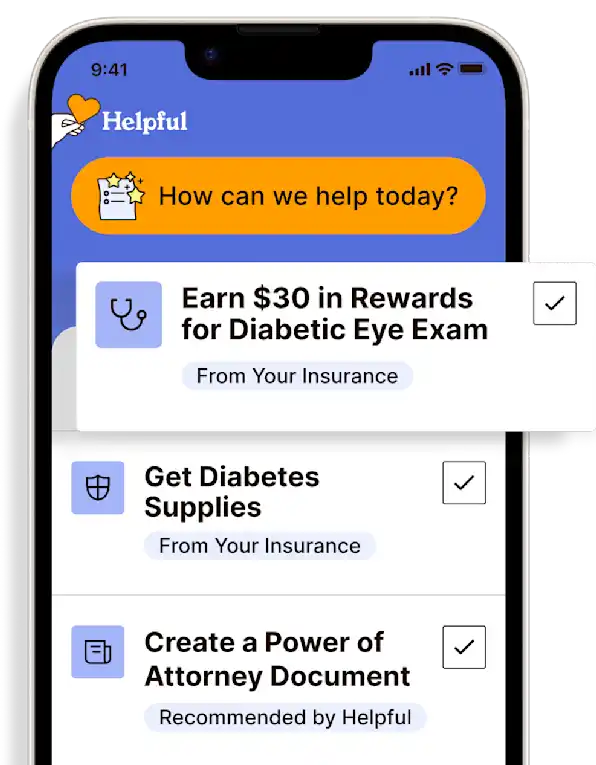Late Onset Multiple Sclerosis (MS)
Late-onset multiple sclerosis (LOMS) is defined as symptoms initiating after the age of 50 and represents about 5% of cases of MS.
Get insurance benefits, legal documents, and medical records in one place

Helpful Highlights
MS can appear at any age but most commonly manifests between the ages of 20 and 40, and it affects women two to three times as often as men.
The average age of people with MS is increasing, but knowledge of the disease in people over age 55 remains sparse.
Almost one million people in the United States have MS, making it one of the most common causes of neurological disability among young adults in North America.
Late-onset MS (LOMS) makes up about 5% of MS cases.
What it is
Multiple sclerosis (MS) is an autoimmune disease wherein the body destroys the protective fatty covering (myelin sheath) of nerve fibers in the brain and spinal cord and leaves scarring (sclerosis, also called lesions or plaques). This causes communication problems between the brain and the rest of the body. The disease can also cause permanent damage or deterioration of the underlying nerve fibers.

MS is an unpredictable disease that affects people differently. Some people with MS may have only mild symptoms while others may lose their ability to see clearly, write, speak, or walk.
Compared to classic MS, late-onset MS (LOMS) is characterized by a more progressive course and greater delay in diagnosis, and unlike adult-onset MS, the first presentation of LOMS is usually motor dysfunction and disability.
Causes and risk factors
The cause(s) of MS is not fully understood but various factors are believed to trigger the immune system to attack the myelin sheath. According to the National Institute of Neurological Disorders and Stroke, possible causes include:
Genetics - an inherited susceptibility to development)
Environmental factors - specifically smoking or vitamin D deficiency
Infections - specifically the Epstein-Barr virus (EBV), which causes infectious mononucleosis
Immunosenescence - age-related changes in the immune system
Symptoms and diagnosis
The symptoms of LOMS are similar to those of early-onset MS, though may present slightly differently. For instance, some symptoms may occur more frequently in LOMS, there may be fewer relapses, and as mentioned earlier progression is generally faster.
Symptoms may include fatigue, difficulty walking, numbness or tingling, muscle weakness, and problems with coordination and balance. Research suggests that the key symptoms of LOMS are motor dysfunctions, sensory disturbances, and visual impairments.
It can be difficult to diagnose MS at any age, but it is typically harder with LOMS, as doctors must consider other age-related causes when making a diagnosis. There is a significant overlap of these symptoms with other age-related conditions.
Medical professionals typically rely on a combination of clinical history, neurological examinations, and advanced imaging techniques such as magnetic resonance imaging (MRI) to assess the presence of demyelinating lesions in the central nervous system. Additionally, cerebrospinal fluid analysis and evoked potential tests may be employed to support the diagnosis.
Tips for those caring for a loved one with MS
If you are caring for someone with MS, the National Multiple Sclerosis Society suggests that you:
Seek support. Be careful not to neglect your own emotional and physical health.
Plan for unpredictability. You should not avoid making plans with your loved one but allow for flexibility in any arrangements and keep things simple to avoid distress. It is also a good idea to have contacts who can help at short notice.
Get help. Sometimes, there are too many tasks to take on all alone. Consider involving family or friends, or if feasible, hiring help with household chores or caregiving tasks.
Look into available financial resources. Depending on where you live, you may have access to assistance programs to help with caregiving.
RESOURCES
Mirmosayyeb, O., Brand, S., Barzegar, M., Afshari-Safavi, A., Nehzat, N., Shaygannejad, V., & Sadeghi Bahmani, D. (2020). Clinical characteristics and disability progression of early- and late-onset multiple sclerosis compared to adult-onset multiple sclerosis. Journal of Clinical Medicine: Clinical Neurology, 9(5), 1326. DOI
Naseri, A., Nasiri, E., Ali Sahraian, M., Daneshvar, S., & Talebi, M. (2021). Clinical features of late-onset multiple sclerosis: A systematic review and meta-analysis. Multiple Sclerosis Related Disorders, 50:102816. DOI
No content in this app, regardless of date, should ever be used as a substitute for direct medical advice from your doctor or other qualified clinician.
Get more support and guidance on insurance benefits, medical records and legal forms.
Helpful brings together your insurance benefits, legal documents, and medical records in one personalized place — so you always know what you have, and never have to search again.

Technology for Health Tasks. Mental Health for the Tough Stuff.
Helpful connects your medical records, insurance, and caregiving tasks automatically. And when you need more than logistics, a therapist is here to guide you.
In-Network and Covered
For Individuals, Couples and Families
HIPAA Compliant, Data Stays Private


Healthcare Tasks Simplified

From syncing records to spotting drug interactions, Helpful does the heavy lifting, turning complex health info into clear tasks and showing you benefits you can actually use, giving you clarity and control over your care.

In-Network Mental Health

Our licensed therapists are here to support you and your loved ones through stress, burnout, and life’s hardest moments, with an inclusive, compassionate approach that works with most insurance plans.

Create Legal Documents

Plan ahead by creating will, trusts, advance directives and more, that ensure your wishes are honored in the event you can’t speak for yourself -with Helpful guiding you every step of the way.